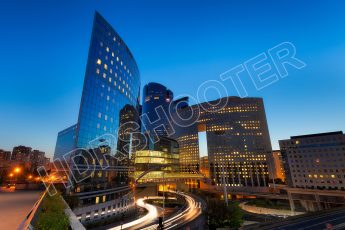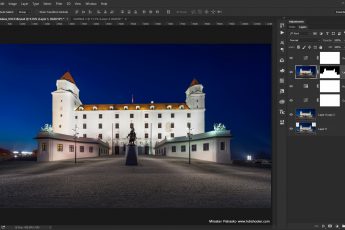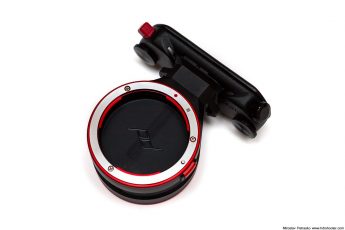Luminosity selections and masks
I use luminosity selections and luminosity masks in all my blending and editing, and today I will try to explain to you what they do and how to create them in Photoshop. But before I start, there is one requirement for understanding this guide. That is, you need to understand how layer masks work in Photoshop, as I will not go into their basics here. Please check this post about the basics of layer masks here to understand those.
Understanding Luminosity selections
In short, Luminosity masks are masks created from luminosity selections. These are selections based on brightness of pixels. The most basic luminosity selections would be then:
- Bright – This selection selects every white pixel by 100%, every black pixel by 0%, and everything in between based on their brightness. So the brighter a pixel is, the more it is selected. So 25% grey pixel would be selected by 75%, 50% grey pixel would be selected by 50% and 75% grey pixel would be selected by 25%.
- Dark – This is the inverse selection to the bright one. A white pixel is selected by 0% and a black pixel by 100%. Everything in between is selected based on how dark it is. So 25% grey pixel would be selected by 25%, 50% grey pixel would be selected by 50% and 75% grey pixel would be selected by 75%
These two selections split an image into two parts. The part that is mostly dark and the part that is mostly bright. A pixel with a 50% grey color, would be right in the middle, selected by 50% in both. I know it’s a bit hard to get the understanding of this, so let’s look at a very basic image, that illustrates this. This is a just a gradient from black to white.
If we do the Bright and Dark selections here, there results would looks like this (this is already shown as a mask, as you can’t display opacity graduation in a selection, white means 100% selected, black means 0% selected).
As you can see on the Bright one, everywhere where it was bright in the original image, there is a shade of grey up to white. On the Dark one, you get the inverse, and it affects the areas that were dark. Let’s looks at one more example, this one with a regular photo.
You see the same effect. The Bright selection selects only the bright areas (clouds, snow), the Dark selection only the dark ones (mostly mountains).
There are also Midtone selections, which are created by subtracting Bright and Dark selections from a photo, but I will get to those in a separate article.
Refined Luminosity selections
You often here these selection being referred to as Bright 1, Bright 2, Bright 3 … Dark 1, Dark 2, Dark 3… and so on. In this context, the Bright selection I mentioned would be equal to Bright 1, the Dark to Dark 1. All others are refinement of these selection. By creating an intersection of a selection with itself, you create a new, more restrictive selection. So the higher the number here, the less is selected. On the gradient image I shown you earlier, the restricted masks would looks like this:
Creating Luminosity selections and masks in Photoshop
Ok, now that you hopefully at least have an idea on how luminosity selections look, let’s go into Photoshop and create some.
Open you image in Photoshop, and go into the Channels window. Here you will see 4 layers. The RGB, Red, Green and Blue. We want to work with the RGB one. Hold down Ctrl and click on it. This will create the Bright selection. Click on the Save selection as channel button in the bottom right (white square with black circle in the middle) and this will create a new channel. Let’s rename it to Bright 1.
We will now work with this one. You should still have your selection active. Hold down Ctrl+Alt+Shift (a small X should be next to your cursor) and click on this new Bright 1 channel. The selection will change. Save it again as a new channel. Name the new channel Bright 2.
You can now continue like this and create further, more restrictive selections, Bright 3, Bright 4, … and so on. If you ever loose your selection, just Ctrl+click on the one you want to restrict further, and the Ctrl+Alt+Shift+click on the same one again. Doing so on Bright 1 will create Bright 2, on Bright 2 will create Bright 3 and so on.
Now onto the Dark selection. Go back to the RGB channel and Ctrl+click on it. This will create a Bright 1 selection. Now hit Ctrl+Shift+I on your keyboard (or select Select/Inverse from the menu). This will change the selection to the Dark 1 selection. You can create a new channel from this selection and call it Dark 1. To create all the other ones, just follow the same steps as when creating the Bright selections.
If you want to avoid having to do this all the time, you can make it easier on yourself. Create actions that makes these masks, or buy Raya Pro or TK actions. Both of them create all the masks for you in one button press.
Once you have these channels, just choose one you want to work it and create a selection of it with Ctrl+click. If you want to make it into a layer mask, go back to layers with the selection active, choose the layer you want to use and click on Add layer mask (button looks the same as the one we used to create channels, in the bottom right of the layers window)
That’s all for today, next time I will show you how to use this in editing and blending of images.




















Leave a Comment